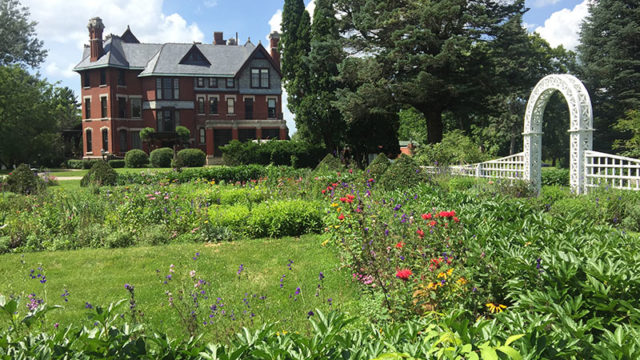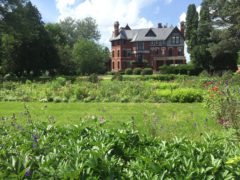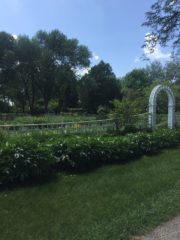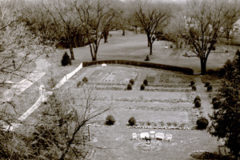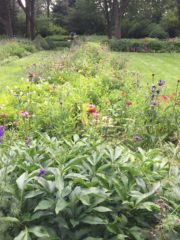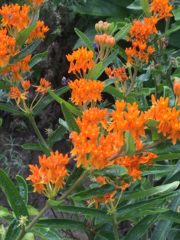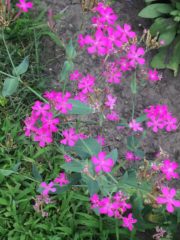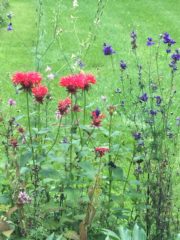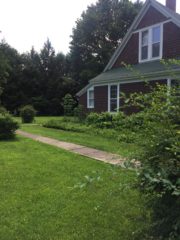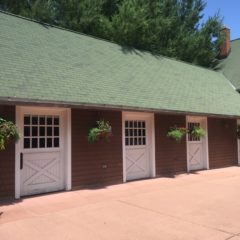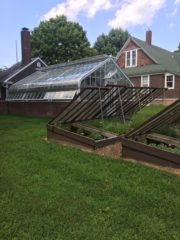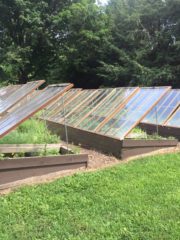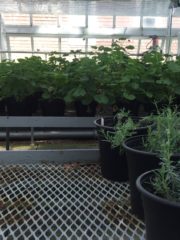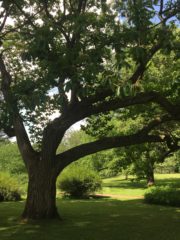If you ever get the chance, take a tour of Brucemore in Cedar Rapids, Iowa. The 120-year-old historic mansion is a gorgeous time capsule inside and out. You enter the 26-acre property through a rolling lawn under towering old chestnuts, oaks and evergreens. There’s a restful pond across from a stage similar to the one where Herbert Hoover stood on the campaign trail in 1928. As you near the mansion natural rolling landscapes change to a formal perennial garden edged in white picket fence with a central arched arbor gate. To the east of the formal gardens and mansion sit a carriage house, barn, greenhouse, vegetable and cutting gardens in the “servants’ village.” Although the estate was never fully self-sustaining, produce supplemented the kitchen and flowers were cut for floral arrangments that filled the home.
Two families and three generations made their mark on Brucemore. Some interesting notables include the story of George’s brother drowning on a voyage home from Europe on the Titanic in 1915, and an exterior sleeping porch in the home was frescoed by Grant Wood in 1925. But for me, the gardens and grounds are the most fascinating.
Caroline Soutter Sinclair built the mansion, completed in 1886, as a home for her six children after she was widowed when her husband fell down an elevator shaft at Sinclair & Company, a meatpacking plant. She and her children lived in the home for 20 years.
In 1906, George Bruce Douglas, Jr. and his wife arranged to trade their home for Brucemore. George, Irene, and their daughters Margaret, Ellen, and Barbara “made Brucemore a lively home with all the benefits of country living. They tripled the property size and added many of the landscape features and buildings still found on the property today.”

The Douglases hired landscape architect O.C. Simonds, embracing his philosophy of prairie landscape design that celebrated natural plantings and native plants. Imagine, a native plant aficionado in 1907!
“Simonds advocated developing a knowledge and general appreciation of nature’s
beauty and artistry as the first key to creating a successful landscape. He maintained that it was
critical to provide changing visual experiences by creating a series of landscape pictures.
To this end, curvilinear drives and pathways, undulating planting patterns, and topography
were important characteristics of Simonds’s designs.
By carefully manipulating such elements, one picturesque view could be enjoyed,
while another waited as a surprise around the next corner.
He advised transplanting native trees, shrubs, and flowers to create safe retreats for the area’s flora.
This regard for plant ecology has been considered one of Simonds’s pioneering contributions to
American landscaping. Many of the Midwestern plantings that Simonds recommended, such as sumac and goldenrod,
were unappreciated at the time and regarded as weeds.
Simonds had a preference for water features in his landscapes, and either
introduced water features or enhanced existing ones.” *
Around 1915, the family purchased a Lord & Burnham Greenhouse. The head gardener, Archie White, worked for the family for nearly 16 years. He was responsible for selecting plants, operating the greenhouse, and managed the care of the grounds overseeing five or more gardeners.
“As a knowledgeable gardener, Irene trusted Archie completely with the care of the gardens and grounds.
While away from Brucemore, she wrote to him about maintenance issues and interesting plants
she had seen during her travels. Archie, who was born in Jamaica, British West Indies,
married Jeanie Hepburn in Cedar Rapids. They raised their children Agnes and Edward in the Servants’ Duplex.” *
Margaret Hall left her family estate to the National Trust for Historic Preservation.The gardens and grounds offer a fascinating glimpse of 20th-century landscape design. It is also filled with amazing art, furniture, and technology of the time. For more information about Brucemore, click here!
Click here for heirloom garden plants and click here for native plants to create your own Brucemore garden!
